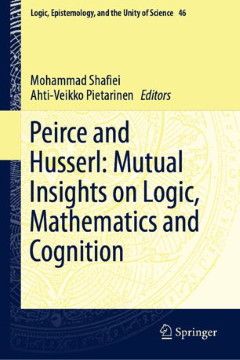Repository | Series | Book | Chapter
Philosophy of notation in the 19th century
Peirce, Husserl, and all the others on inclusion and assertion
pp. 61-75
Abstract
This paper focuses on two important notational devices that were embedded in Husserl's and Peirce's notations, the sign of inclusion and the sign of assertion. Husserl first criticizes, then follows Schröder in taking inclusion to be a simpler concept than equality, and endows his logical notation with a sign of inclusion. This was due to Peirce's notational innovations and arguments, by which Husserl is indirectly influenced through of Schröder. Further, like Frege Husserl endows his notation with a sign of assertion, claiming that without some such sign it would be impossible to distinguish the assertion of a propositional content from its occurrence unasserted in some larger propositional context. Against this idea of Frege and Husserl, Peirce had a powerful argument—the compositional structure of a formula is de facto the sign of its assertion—, and Peirce's algebraical and graphical notations can be seen as notational realizations of this principle.
Publication details
Published in:
Shafiei Mohammad, Pietarinen Ahti-Veikko J. (2019) Peirce and Husserl: mutual insights on logic, mathematics and cognition. Dordrecht, Springer.
Pages: 61-75
DOI: 10.1007/978-3-030-25800-9_4
Full citation:
Bellucci Francesco (2019) „Philosophy of notation in the 19th century: Peirce, Husserl, and all the others on inclusion and assertion“, In: M. Shafiei & A. J. Pietarinen (eds.), Peirce and Husserl, Dordrecht, Springer, 61–75.



